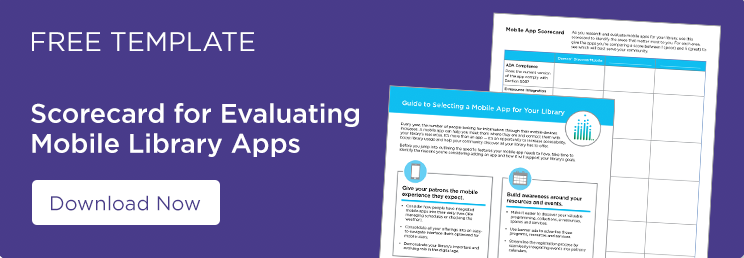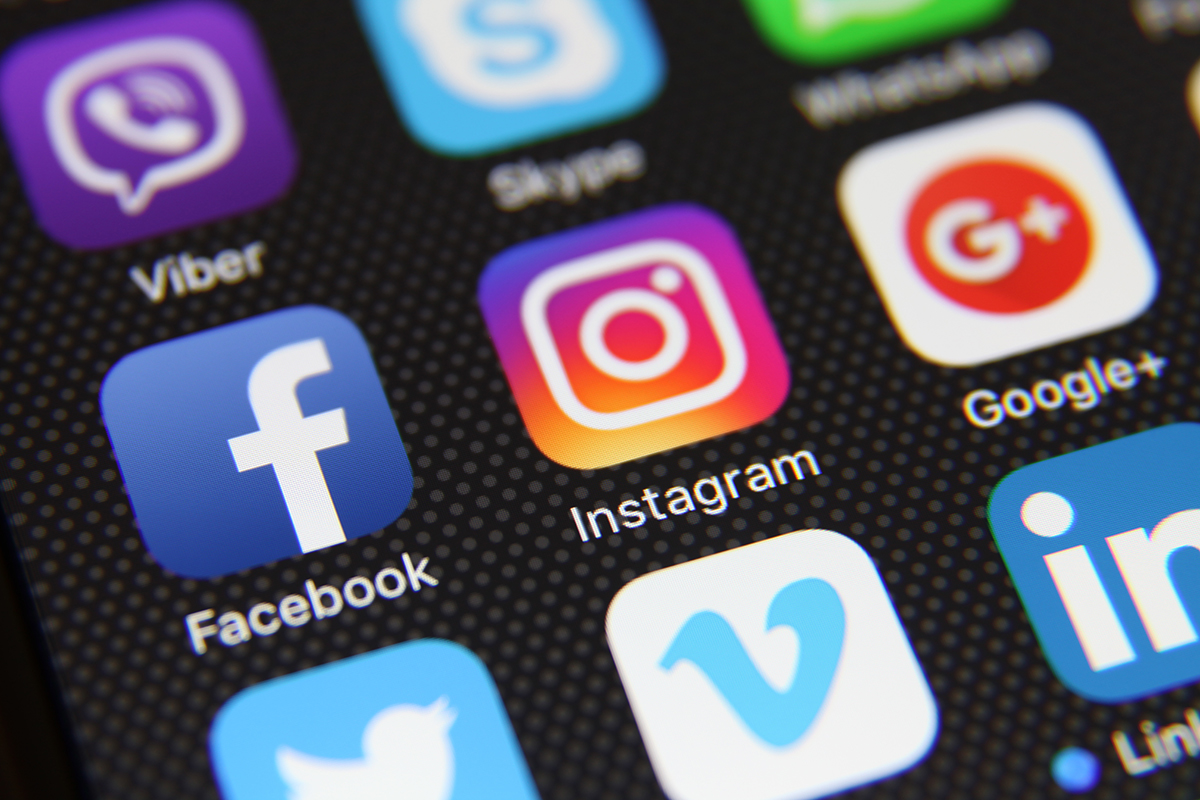
A Responsive Website and a Mobile App: Does Your Library Really Need Both?
According to Pew Research Center, more than one in 10 American adults are “smartphone-only” Internet users, meaning they do not have traditional home Internet service. In addition, “reliance on smartphones for online access is especially common among younger adults, non-whites and lower income Americans.”
No matter the demographics of the community you serve, a portion of your patrons are only able to access your library by either visiting a physical branch or interacting with you on their phones. It’s clear that your library needs a mobile strategy or you will miss out on a large audience of potential patrons. However, many libraries are left wondering which is better: a responsive website or a mobile app — or a combination of both? Let’s explore the answer to that question.
Which Experience Do You Prefer?
As is true with many decisions that your library has to make, a good way to get started is by putting yourself in your patrons’ shoes. Consider how you spend time on your own phone: When you’re looking for the day’s weather report, do you launch your mobile browser, type in weather.com, search for your city and then choose the report that meets your needs? Or do you click a convenient shortcut on your phone’s home screen to launch an app designed specifically to display weather-related info?
When you’re doing mobile banking, do you open a browser, type in your bank’s URL, type in your login credentials and scroll through the bank’s mobile site to find what you need? Or do you tap an app that takes you directly to your account summary and features easy-to-find shortcuts to the most commonly used functions on your bank’s website?
Odds are that many of your patrons interact with their phones in a similar way to how you interact with yours. If you tend to rely on apps, your patrons probably have that tendency as well.
One Size Does Not Fit All When It Comes to Mobile
Every community — and each individual patron — is different; however, many patrons use apps on a daily basis and have come to expect a certain experience on their phones. Keep in mind that the average smartphone user spends 80–90% of mobile time in apps, accesses more than 30 apps on a monthly basis and uses at least nine apps per day — and those numbers are trending upwards!
Because they’re so used to having it, smartphone users want easy navigation with buttons instead of dropdown menus. They want quick links to popular resources, whether that’s account information or upcoming event calendars, and they want to be able to complete tasks on their phones rather than just read information.
Think of it like this: Many mobile-optimized sites offer passive displays of information. Mobile apps, on the other hand, offer an engaging experience, including the following:
- A library mobile app will allow your users to scan books they find at a bookstore or at a friend’s house to see if the library has them, and then they can easily place holds on those items in the same interface.
- A mobile app saves a whole family’s library account numbers, allowing your patrons to conveniently check on fines and see when items are due.
- Apps can also promote programming and resources that are relevant to the specific user, increasing resource discoverability and driving event participation.
Not only are apps convenient for your patrons, but they’re convenient for the librarians who are responsible for managing them as well. Whereas managing a site requires a certain level of tech savviness or the help of an already overtaxed IT department, the best library mobile apps are developed for librarians. They’re intuitive and easy to update so that your library provides a consistently high level of service to its mobile users.
When deciding if you’ll offer a mobile-optimized site, an app or both, you’ll want to keep in mind the devices that your patrons use and the audience that you’re trying to reach. A responsive website may do the trick for mobile users who are already engaged with your library, but what about those who are not aware of the value that your library offers your community? According to Pew Research Center, a large percentage of your community members may belong to this group. Pew reports that only 22% of Americans are aware of “all or most” of the services that their libraries offer, and a full 31% know “not much or nothing at all” about the services that their libraries provide.
Promoting your library in a popular app store will help you reach this completely new audience, and many apps offer a “notification” functionality and tailored messaging that you can leverage to invite new patrons to explore your full range of offerings. The new community engagement possibilities introduced by an app will ensure you see a return on your investment!

Accessibility Is Key
According to the American Library Association (ALA), one of librarians’ core values is access. Because librarians are committed to ensuring that resources are “readily, equally and equitably accessible to all library users,” ADA compliance should be a key consideration when determining your mobile strategy.
The Americans with Disabilities Act (ADA) Standards for Accessible Design emphasize making all electronic and information technology accessible to people with disabilities. Whether you decide to offer a mobile-optimized site, an app or both, ADA compliance of the user experience is a must.
As you evaluate whether or not you’re offering the best experience for users of all visual abilities, consider the following questions:
- Does your site and/or app have a high contrast feature that modifies branding colors and makes content readable for those with moderate vision impairment and/or those accessing it in a sunny location?
- Does it have a color deficiency feature that supports users who are color blind?
- Is it compatible with screen readers and adaptive technology?
Innovative Libraries Offer Innovative Mobile Experiences
In addition to exploring patron expectations, convenience and accessibility when planning your library’s mobile strategy, consider what your mobile presence communicates to patrons. If you want patrons to perceive your library as a forward-thinking institution that provides modern offline and online experiences, a mobile app may be just what you need to solidify that perception.
After all, your library is more than just a collection of books — it’s a hub that offers its community valuable content, engaging programming and access to new, exciting technology. What better way is there to highlight how dynamic you are than by using some of that new, exciting technology to reach patrons outside of your physical branch? A taste of what’s in store at your library can help entice patrons into exploring the full range of what you have to offer.
Ready to get down to the details of deciding if you should offer a mobile-responsive site, an app or both? Download our Guide to Selecting a Mobile App for Your Library for a list of key factors to consider when deciding if a mobile app is right for your library.
Sources
Library Services in the Digital Age
Mobile Marketing Statistics Compilation
Report: Smartphone Owners are Using 9 Apps per Day, 30 per Month
Related Resources
You Responded, We Listened: Wandoo Reader Survey Results and Plans for 2019
Discover what we learned from our Wandoo Reader customer survey and how we are using the results to enhance current features and develop new functionality for 2019.
read moreExplore the Benefits of Offering Online and In-Person Learning at Your Library
Are you interested in offering online learning opportunities while still continuing to hold in-person programs at your library? Explore the benefits of both learning formats and get ideas on ways they can complement each other.
read more4 Signs that Your Community Is Ready for a Library Mobile App
Are you thinking about investing in a library mobile app, but you’re not sure if your patrons would use it? Use this checklist to help you determine if your community is truly ready for a library mobile app.
read more





